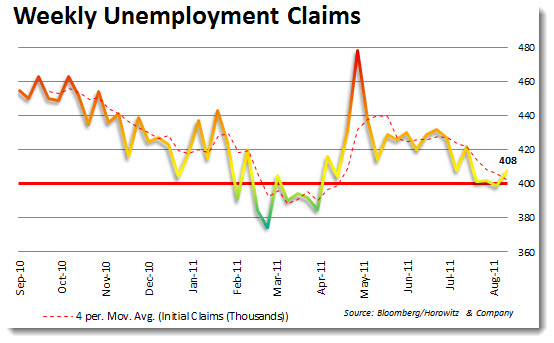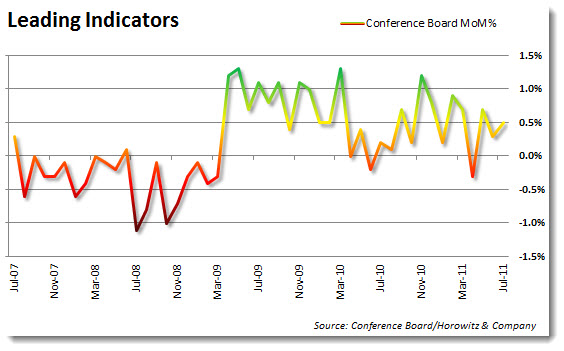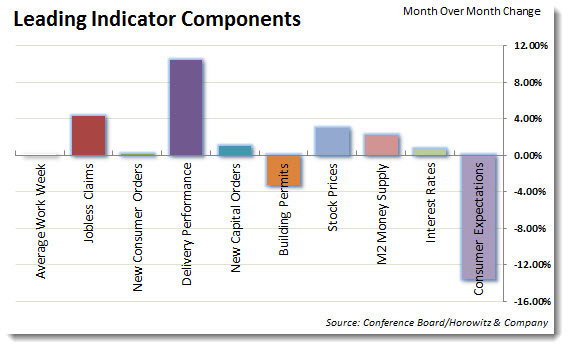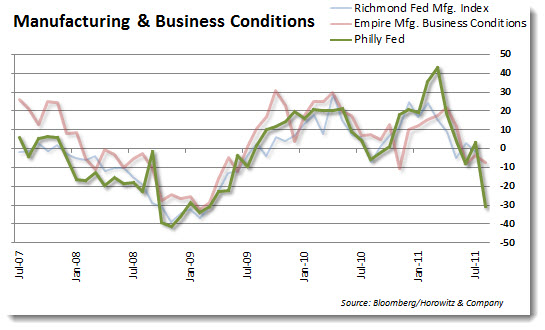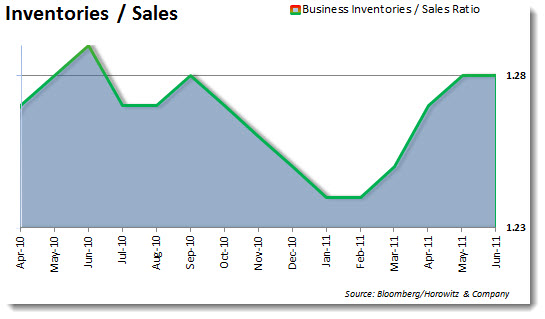This was part of a note that we sent to our clients this morning. TDIMG clients have access to a private site that is updates with information about their portfolios, stocks, markets and the economy. as well as It was a bad day for equities. Based on value of Dow Jones Total Stock market, investors lost $687 billion on Thursday. The index is now down 13 of past 19 sessions; down 17.4% from April recovery high; down 12.5% in August.
Japan‘s automobile industry was lowered to “neutral” from “attractive” at Goldman Sachs Group Inc., which cited slowing U.S. economic growth and prolonged strength of the yen. This is just one headline that is crossing regarding downgrades. All of a sudden, downgrading of economies and growth prospects has become fashionable.
JP Morgan downgraded the U.S. GDP from 2.5% for Q4 2010 to 1.0% and 0.5% from 1.5% for 1Q 2012. That is interesting as the progression of growth estimates has been gradual, up until now. Many are focusing on the confidence killing debt-ceiling fiasco as one important factor while others are pointing a finger at the EuroZone crisis. Today’s economic reports did not help to instill any hope that it is getting better.
For one, initial claims climbed above the “key” 400,000 level and continuing claims actually rose for the week. Moreover, each was far ahead of estimates. Add in the fact that last week’s claims were revised higher and the recent drop that has provided a sense that the jobs market was starting to heal was rightly extinguished.
The Conference Board released the Leading Indicator index for July. It is calculated using ten components that are supposed to be forward looking. For example,month-over month initial claims and stock prices are part of the index. Estimates were for a rise of 0.3% for the month. The actual report came in better at 0.5%.
The S&P 500 index rise from July was beneficial, while the lousy UMich confidence number was very detrimental.
Beyond that report that could be considered a neutral event for investors, the Philly Fed Manufacturing Index was shocking. Expectations were for a 2.0 reading and the -30 was not taken well.
The level that we are seeing is what would be expected during recessions. Looking at the trend, there is a massive decline that may be on par with what was seen back in than was seen in 2008/2009. At that time, it was said that consumers spending “fell off a cliff” suddenly. One of the key indications that there was going to be a slowdown in manufacturing has been the Inventory-to-Sales ratios that have been on the rise. This has been an area we have been writing about over the past 6 month as a warning flag for the manufacturing industry.
Just yesterday, there was an “expert” on CNBC discussing how there was no significant rise in the Inventory-to-Sales ratio and that manufacturing is doing well. Obviously he has not been looking at the same information as we have been seeing this year.
Generally, the recurring world problems were brought to the surface again as the FED put out a statement that they are looking into the cash and liquidity of EuroZone banks that do business in the U.S. That particular alert was all it took to light a spark beneath an already frenzied market condition.


